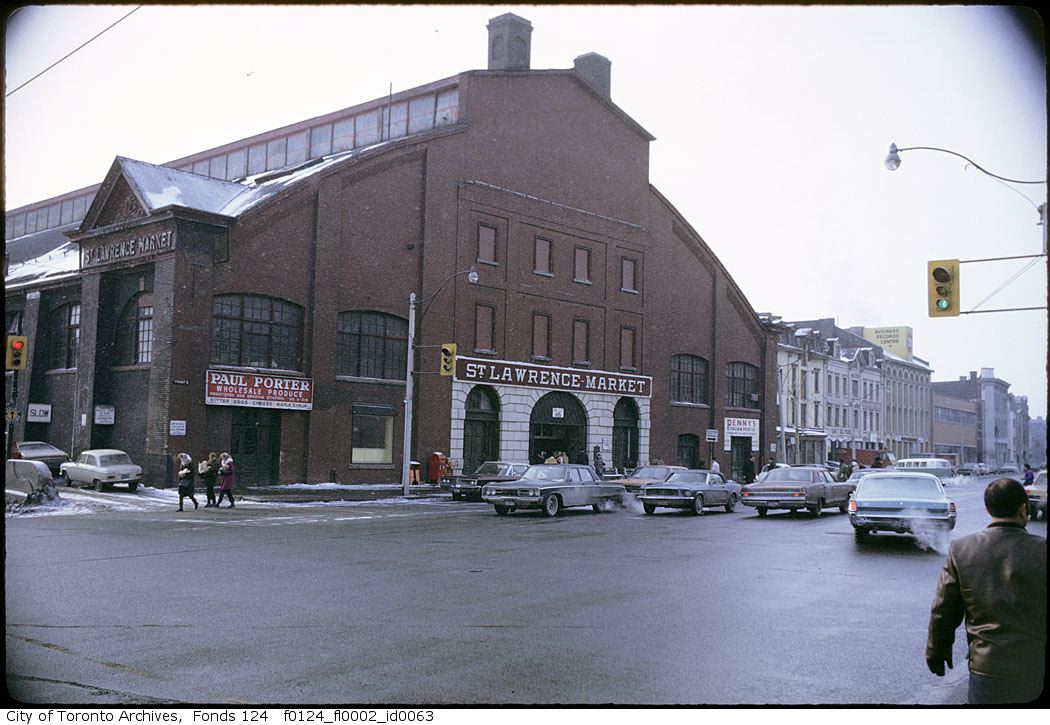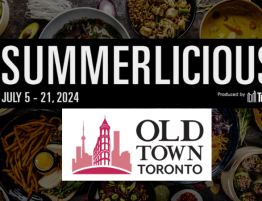
Google “things to do in Toronto” and no matter which list you click, St. Lawrence Market is bound to make an appearance. If it’s not the handsome, red-brick architecture that appeals, it’ll be the fresh produce. Or the artisan shops. Or the events hosted year-round. It’s hard to encapsulate the full glory of the market; you really have to witness it firsthand. In the meantime, check out these fun facts about St. Lawrence Market and its incendiary history! (Yes, that’s a reference to the fact that it once burned down. Read on to learn more.)
1. Best of the Best
Let’s start off with the credentials. For many years, the St. Lawrence Market has earned international renown as a must-stop destination for any visitors to Toronto. Finally, in 2012, National Geographic named St. Lawrence Market the best food market in the world. That’s right: in the world. So if you haven’t been, what are you waiting for?
2. Ye Olde Market!

Although St. Lawrence Market has had many stages in its evolution, its ultimate beginning dates way back to 1803. It was Lieutenant Governor Peter Hunter who set the boundaries of Toronto’s first official market, naming the square north of Front Street (then Palace), west of Jarvis, south of King, and east of Church the Market Block. The first permanent market building was quick to follow.
3. Here There Be Shopping! (But Only Sometimes)
The Market Block was alive with city activity! That is, when it was open. Back then in the19th century, the Market was only open on Saturdays, which meant you had a pretty narrow window to go and get your groceries done.
4. It’s All Fun and Games Until Somebody Loses an Eye
For the most part, the Market was a jolly place to be – but let’s remember that times were very different. In addition to auctions, socializing, and the selling of wares, the Market Block was also the place where public punishments were carried out. (Flogging. It was flogging.)
5. Illegal Produce

It could be part of the reason the Market Block was so popular on Saturdays is because it was the only place in the city you could legally buy… well, anything! Toronto bylaws of the time banned the selling of eggs, butter, meat, and vegetables between six in the morning and four in the afternoon… except at the market.
6. Up in Flames
As promised, here we have the fiery bits of the Market’s history. The original market building was made of wood, and in a time when people had less of a handle on fire safety that was just a hunk of kindling to the 1849 Great Fire of Toronto. However, after the blaze, a brick building was constructed in its place. They called it St. Lawrence Hall!
7. Brick Makes Everything Ritzy
The new brick structure opened up the activities that took place in the Market Block even further. Vending continued as normal, but the Hall also hosted concerts, lectures, exhibitions, and public meetings!
8. Sorry, There Are Just Too Many of You
The buildings preceding today’s St. Lawrence Market underwent many renovations over the years (only one of them flame related, in case you were wondering). Maybe the most peculiar reason for renovating happened in the late 1890s. The population of Toronto saw a dramatic spike around that time, so St. Lawrence Hall had to be rebuilt in order to accommodate the growing populace.
9. Bunch of Copy Cats

So, we’re not saying St. Lawrence Market is the best public market in Toronto (though National Geographic would disagree). But we will say it was the first. Quick to follow, St. Patrick’s Market was founded in 1836 and St. Andrew’s Market came about in 1850, making them the three first public markets in Toronto alongside St. Lawrence. Of that trifecta, St. Lawrence Market is the only one still operating as a market. You can now find an organic food court at 238 Queen Street West where St. Patrick’s used to be, and the block that was home to St. Andrew’s is now a park.
10. Police Station Priorities
The South Market building, in addition to being the first City Hall, was also the first police station! The proof? There are still some chains hanging from a wall where prisoners used to be chained. (Ok, we admit these are from a Halloween party in recent years… but they are where we are told chains used to hang ;)) As if being in shackles wasn’t bad enough, remember that the Market sits on the shore of Lake Ontario. When inevitable flooding happened, rumour has it unlocking prisoners was not a top priority, and there were, some say, a few gruesome, watery deaths…
11. And It Ain’t Over!

The St. Lawrence Market area has been a hub of Toronto activity for over 200 years, but it’s come a long way from its one-day-a-week hours of operation. They are now open 5 days a week with a Farmers’ Market on Saturdays. Learn more at www.stlawrencemarket.com.









